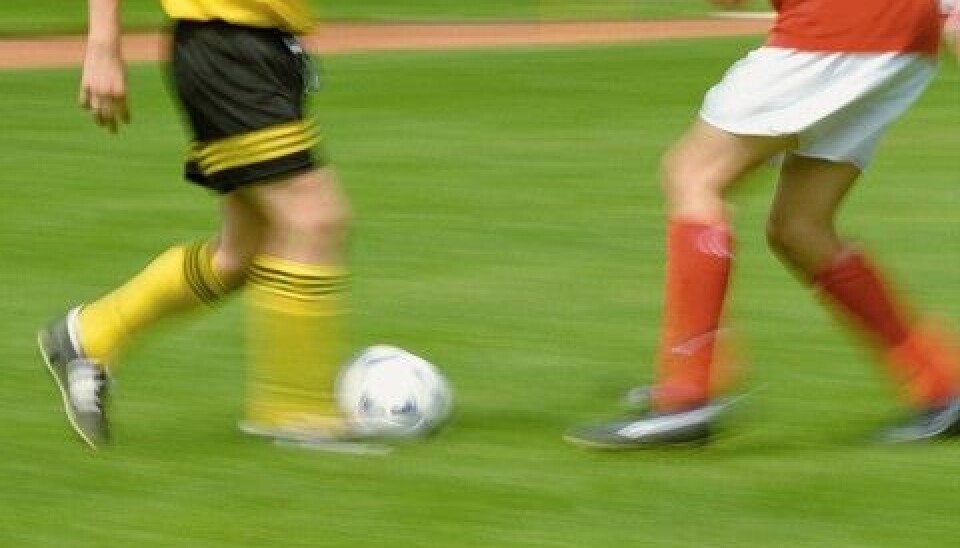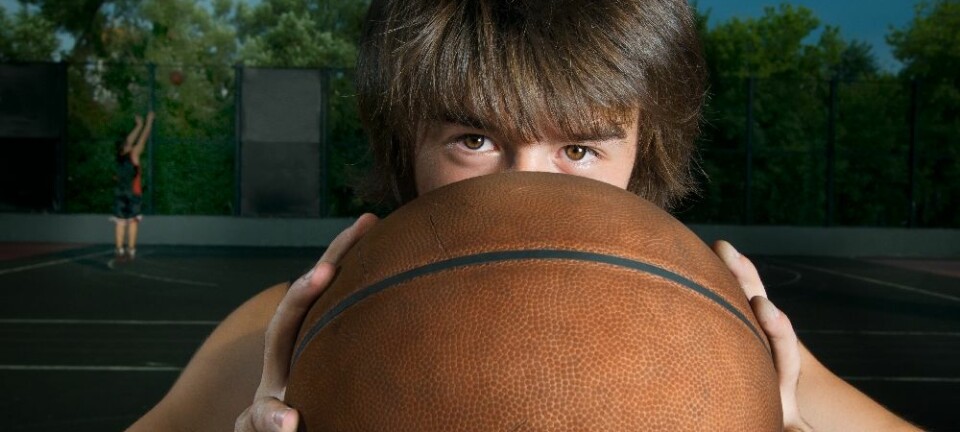This article was produced and financed by The Research Council of Norway

Fully automated football analysis
Using new electronic solutions, football coaches can provide their players with video analysis half-time or immediately following a match.
Denne artikkelen er over ti år gammel og kan inneholde utdatert informasjon.
Coaches and analysts currently spend hours in front of a PC screen going through films and analysing the play of individual players during football matches.
"But it takes a long time before the players get to see the analyses for themselves. Our tools can fully automate much of the process. This allows us to save time and reduce the amount of data involved,” explains Professor Pål Halvorsen of the University of Oslo.
Efficient recording and analysis
The new solution consists of two systems: Muithu and Bagadus. Muithu is a video-recording system specially designed for sport while Bagadus is an analytics tool integrating a sensor system, soccer analytics annotations and video processing of a video camera array.
These systems open the door to new types of video analysis and have drawn substantial international attention. They have been developed at the Centre for Information Access Disruptions (iAD).
“The centre is studying the accessing of very large amounts of data in general – how we can compile, save, index and make such data available as quickly as possible to a wide number of users. Top-level sport is an interesting field to work with precisely because it generates enormous amounts of data that need to be analysed quickly,” says Halvorsen.
Analytical tools for the manager
An innovative group interested in implementing new technology, the football division of the sports club Tromsø IL has been the test subject for the iAD in 2012. This season the Tromsø club has been using the Muithu system to analyse its matches.
“Normally, the entire analysis team would pore over extensive video recordings after the end of a match,” says Professor Dag Johansen of the University of Tromsø.
“But Muithu is a tool for the manager. This system makes it possible for him to put aside pen and paper and review action sequences then and there on his mobile phone without this affecting his coaching responsibilities.”
When the manager presses a key on his mobile phone he sets what is to become the end point of a recorded sequence. Muithu automatically retrieves the previous 15 seconds of footage from six different cameras.
Dedicated social network
“After a match or practice all the video footage selected by the manager is ready for access from the office, eliminating hours of searching through recordings afterwards. Experience indicates that the video recorded is cut down to just five per cent of the former amount,” explains Johansen.
One very important aspect of the system is that a completely new social network has been developed, allowing the manager to send players video clips from matches or practice sessions and discuss specific situations in a dedicated discussion forum.
The sensors follow the players
As an extension of the Muithu solution, the iAD has developed the Bagadus system, which combines data from Muithu with a sensor system developed by ZXY Sport Tracking. The setup is based on sensors attached to belts worn by the players. The sensors continually provide various data such as a player’s position on the field.
“We have integrated the two systems with an array of cameras covering the entire pitch and all players at all times. This makes it possible, for instance, to select and zoom in on all situations where a certain player is within the opponent’s penalty area,” Halvorsen points out. The system delivers a video summary of the selected events in under a second. Using traditional methods it could take hours to achieve the same result.
“The potential of this integration of systems is enormous - and exciting. We envision a scenario in which supporters would be able to search for their favourite players and follow them throughout an entire match, for example, or they could obtain specific video clips they wish to review afterwards,” concludes Halvorsen.
Translated by: Glenn Wells/Carol B. Eckman
































